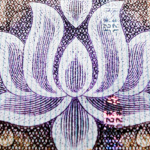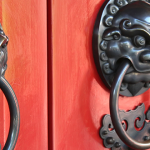KCNY FAQ with Guangdong (Jeffrey) Qi from E Fund Management

By KCNY portfolio manager
Guangdong (Jeffrey) Qi
E Fund Management
($70b AUM)
1/28/2015 – Over the past week E Fund Asset Management portfolio manager Jeffrey Qi and Brendan Ahern CIO of KraneShares, visited investors across the country answering questions on the Renminbi, the China commercial paper market, and the KraneShares E Fund China Commercial Paper ETF (NYSE:KCNY). Jeffrey has summed up the most frequently asked questions and written his responses below:
Can you tell us about E Fund Asset Management?
E Fund Asset Management is one of the top 5 fund houses in China based on Assets Under Management (AUM). As of 31 Dec 2014, the company’s AUM is approximately 70 billion USD.
What are the firm’s capabilities in fixed income?
E Fund has the largest fixed income team in China’s asset management industry with 45 investment professionals. We have 10 credit analysts covering almost every single credit issuing. We have never held a bond that defaulted. Defaults are very rare in China as only the largest firms are allowed to buy bonds.
It is often discussed that China wants to internationalize the Renminbi (RMB). Can you expand on this?
People are talking more and more about RMB internationalization – the idea gained momentum in late 2011 when the Chinese government started the Renminbi Qualified Foreign Institutional Investor (RQFII) project. This program allows asset managers with quotas to raise funds in Hong Kong and channel such funds directly into Mainland securities in RMB. With the advent of the RQFII system international investors are now buying and selling funds in RMB with significantly fewer restrictions. And as the Chinese government is opening up its capital market, I believe they will continue to take steps to internationalize the RMB.
Can you provide your views on China’s currency?
The RMB has tended to appreciate against USD because China is still the fastest growing major economy. For the past 10 years the currency has generally appreciated though there have been brief times of depreciation. During times of financial crisis, the currency will peg to USD, which is the case in the 2008 crisis. With more than $4 trillion USD foreign exchange reserve, China has the capability to keep the currency stable.
How large is China’s commercial paper market?
Market size of commercial paper is 1769 billion RMB or 285 billion USD as of 31 Dec 2014 according to Wind, a widely used Chinese financial data provider.
Are these underlying issues liquid?
The trading volume for China commercial paper in 2014 was 10.24 trillion RMB according to Wind as of 12/31/2014. This means the number of overall trades in the China commercial paper market in 2014 was six times its total size, indicating a healthy amount of buying and selling.
Who are the main buyers of commercial paper in China?
Commercial banks and policy banks are the major buyers. They take around 50% and 36% of the market share respectively. They generally consider commercial paper as safe and liquid. Money market funds in China are also buyers of commercial paper.
Information on securities mentioned is provided strictly for illustrative purposes and should not be deemed an offer to sell or a solicitation of an offer to buy shares of any securities.
The KraneShares E Fund China Commercial Paper ETF is not a money market fund.


















